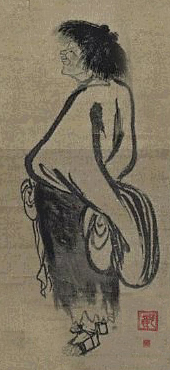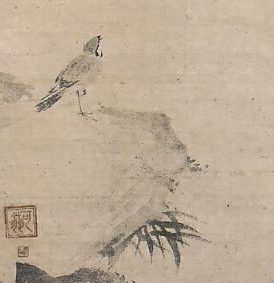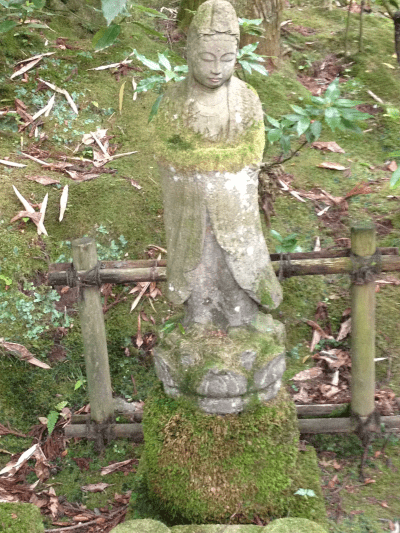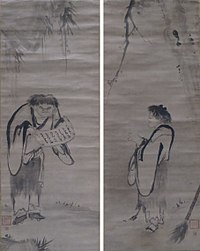Buddhist art in Japan: Muromachi Period and Kao Ninga
Lee Jay Walker
Modern Tokyo Times

The world of Kaō Ninga focused heavily on Buddhism and the impact of ideas emanating from Northeast Asia. Thus the flow of ideas that fused different ideas within Buddhism concerning China, Japan, and Korea shaped his life – religiously and culturally.
Kao painted some of the finest earliest works in the fourteenth century of monochromatic ink painting (suiboku). Naturally, this art form was inspired by the Middle Kingdom (China). Hence, during this period of Japanese art history, Zen Buddhist artists increasingly connected with the spiritual and cultural realm through the medium of suiboku art.

The Kamakura Period (1185-1333) also impacted Kaō. This concerns the cultural dynamics that arose in this period of Japanese history. Hence, the center of power had shifted to a region that had its own cultural and religious dynamics within society. Therefore, the regional fusions of Buddhism and Shintoism – and the important dynamics of Confucianism and Taoism – altered the discourse within the ruling elites.
The MET Museum says, “The Kamakura and Nanbokuchō eras were remarkable for the shift that occurred in the Japanese aesthetic. The highly refined sensibilities of the superseded aristocracy did not interest the new patrons. Instead, the warrior class favored artists who treated their subjects with a direct honesty and virile energy that matched their own. What followed, then, was an age of realism unparalleled before the late eighteenth century. This renascence was not limited to art. Religious movements experienced a similar resurgence, and reform and counter-reform currents animated and transmuted Kamakura Buddhism. While the courtly and warrior elites perpetuated the Heian traditions of Amida worship and Esoteric Buddhism, for the first time in its history Buddhism was also actively proselytized among the Japanese masses.”

Hence, Kaō was influenced by the changing dynamics of this period and how Buddhist clergy from various sects interacted with wider society. In the art world of Japan, Kaō flourished in the fourteenth century. He also highlights further inroads of Chinese art and culture through the medium of suiboku art.
The Brittanica says, “There has been much confusion about the identity of Kaō, whose name appears on the portrait of Kanzan and on other early suiboku-ga. Some believe that Kaō was a high-ranking Zen priest named Kaō Sōnen; others have identified him as the painter Ryōzen, though the latter suggestion has been largely discounted on stylistic grounds. Still others have suggested that he was another professional Buddhist painter associated with the Takuma school.”

Irrespective of the above, the legacy of Kaō remains potent concerning suiboku art and how the Buddhist monasteries brought this art form to Japan from China.

PLEASE DONATE TO HELP MODERN TOKYO TIMES
Modern Tokyo News is part of the Modern Tokyo Times group
DONATIONS to SUPPORT MODERN TOKYO TIMES – please pay PayPal and DONATE to sawakoart@gmail.com
http://moderntokyotimes.com Modern Tokyo Times – International News and Japan News
http://sawakoart.com – Sawako Utsumi personal website and Modern Tokyo Times artist
https://moderntokyonews.com Modern Tokyo News – Tokyo News and International News
PLEASE JOIN ON TWITTER
https://twitter.com/MTT_News Modern Tokyo Times
PLEASE JOIN ON FACEBOOK
https://www.facebook.com/moderntokyotimes
s